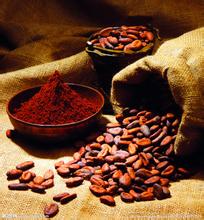Basic knowledge of Coffee what tools do you need to make coffee?
Cuba Marago Rippi Cuba maragogype elephant bean green bean
Elephant bean, giant coffee bean (Elephant bean), which is 3 or more times larger than other coffee beans, has a taxonomic name Maragogype, derived from Maragogype County in the state of Bahia, Brazil, where the taxonomic status of Giant Coffee Bean was first established in 1870 as an Arabica derived species (hybrid). Cuba, the largest island in the Caribbean, is long and narrow, reaching 1200KM from east to west, and mountains are concentrated at the east and west ends. It belongs to tropical climate. The language is Spanish and English is also very common. It's a communist country. The only country in the world where unemployment is strictly prohibited by law.
Kenya Coffee Raw Bean Kenya AA green bean
Coffee entered Kenya in the 19th century, when Ethiopian coffee drinks were imported into Kenya through southern Yemen. But it was not until the early 20th century that the bourbon was introduced by the St. Austin Mission. Kenyan coffee is mostly grown at an altitude of 1500 to 2100 meters and is harvested twice a year. To ensure that only ripe berries are picked, people must tour the forest about seven times. Kenyan coffee is grown by small farmers. After they harvest the coffee, they first send the fresh coffee beans to the cooperative cleaning station. The washing station sends the dried coffee to the cooperative in the form of "parchment coffee beans" (that is, coffee beans covered with endocarp) to the cooperative ("parchment coffee beans" is the last state of coffee beans before peeling). All the coffees are collected together, and growers charge an average price according to their actual quality. This trading method generally works well and is fair to both growers and consumers.
Hawaii Kona Extra fancy kona raw beans
A coffee producing area considered to be one of the best in the world must cover six important factors: soil quality, altitude, sunshine, cloudiness, rainfall and slope. Hawaii is blessed with these six elements to produce the best and most respected coffee in the world. Soil: fertile tropical Hawaiian volcanic soil that provides the dense nutrients of the Kona Coffee Tree. Altitude: the appropriate altitude of 2100 to 3600 meters and the cool moonlight promote the fruit of Kona Coffee to ripen slowly and create an excellent taste with rich appearance and full moisture.
Ethiopia plus snow coffee Ethiopia Washed Yirgacheffe coffee raw beans
Medium to pointed (delicate) acidity and medium body, smooth and well balanced cup with a creamy, buttery flavor. The Cream of the Ethiopian Crop with real Mocca flavor. Yejaschefine is the representative of East African boutique coffee (specialty coffee). It has a very special and unusual aroma of citrus fruit and flowers, which makes it one of the most distinctive coffee in the world, which is rare and expensive. It is produced in the highland of sidamo province, Ethiopia (4000 feet above sea level), in a relatively high and narrow area. Yega snow coffee is of high quality that is difficult for ordinary mochas to reach, and it is also an excellent representative of African washed coffee.

Important Notice :
前街咖啡 FrontStreet Coffee has moved to new addredd:
FrontStreet Coffee Address: 315,Donghua East Road,GuangZhou
Tel:020 38364473
- Prev

The basic knowledge of making coffee what is the knowledge of coffee?
Coffee trees can be roughly divided into five types, of which Arabica and Robusta are more common. Arabica species, which account for more than 70% of the world's total output, are generally grown on slopes above 900 meters above sea level and are mostly found in tropical high-altitude areas such as Central and South America, East Africa, Southeast Asia and Hawaii. Its pleasant aroma, rich taste, and the tree species need
- Next

Whether there are more kinds of coffee beans, which kind of coffee beans are suitable for hand brewing?
Mountain coffee: from Jamaica. Pure Jamaican Blue Mountain Coffee perfectly combines the unique sour, bitter, sweet and mellow flavors of coffee. The aroma is very rich, mellow and smooth, with long-lasting fruit flavor, forming a strong and attractive elegance, which is unmatched by other coffee. Blue Mountain Coffee is the best of the best, with a price of several thousand dollars per pound. Currently, Ja
Related
- Does Rose Summer choose Blue, Green or Red? Detailed explanation of Rose Summer Coffee plots and Classification in Panamanian Jade Manor
- What is the difference between the origin, producing area, processing plant, cooperative and manor of coffee beans?
- How fine does the espresso powder fit? how to grind the espresso?
- Sca coffee roasting degree color card coffee roasting degree 8 roasting color values what do you mean?
- The practice of lattes: how to make lattes at home
- Introduction to Indonesian Fine Coffee beans-- Java Coffee producing area of Indonesian Arabica Coffee
- How much will the flavor of light and medium roasted rose summer be expressed? What baking level is rose summer suitable for?
- Introduction to the characteristics of washing, sun-drying or wet-planing coffee commonly used in Mantenin, Indonesia
- Price characteristics of Arabica Coffee Bean Starbucks introduction to Manning Coffee Bean Taste producing area Variety Manor
- What is the authentic Yega flavor? What are the flavor characteristics of the really excellent Yejasuffi coffee beans?

